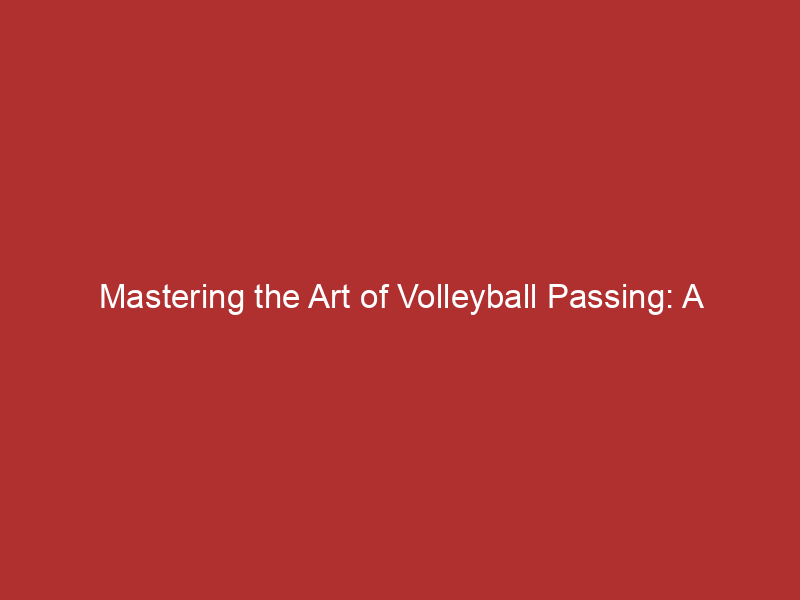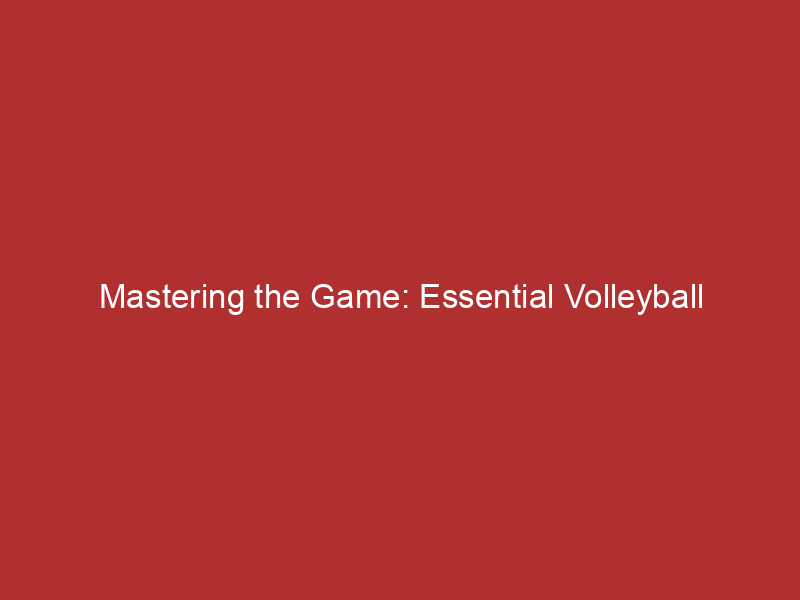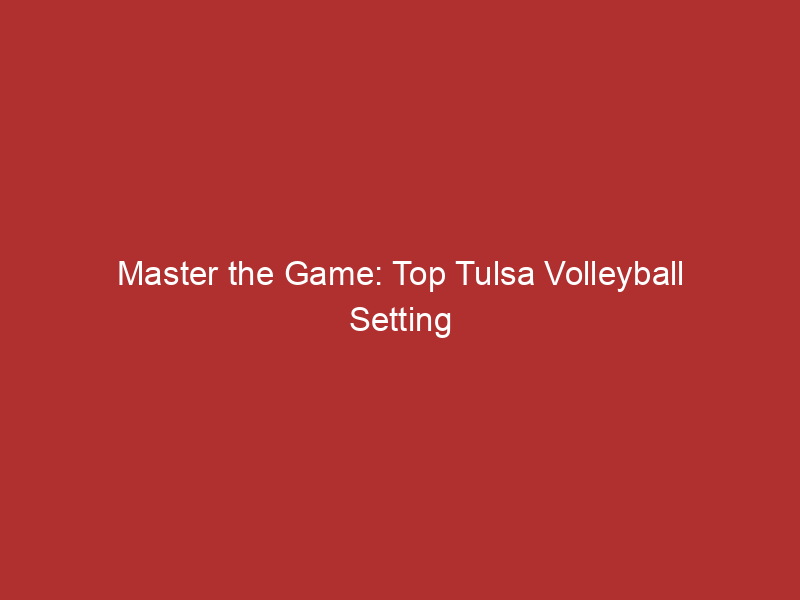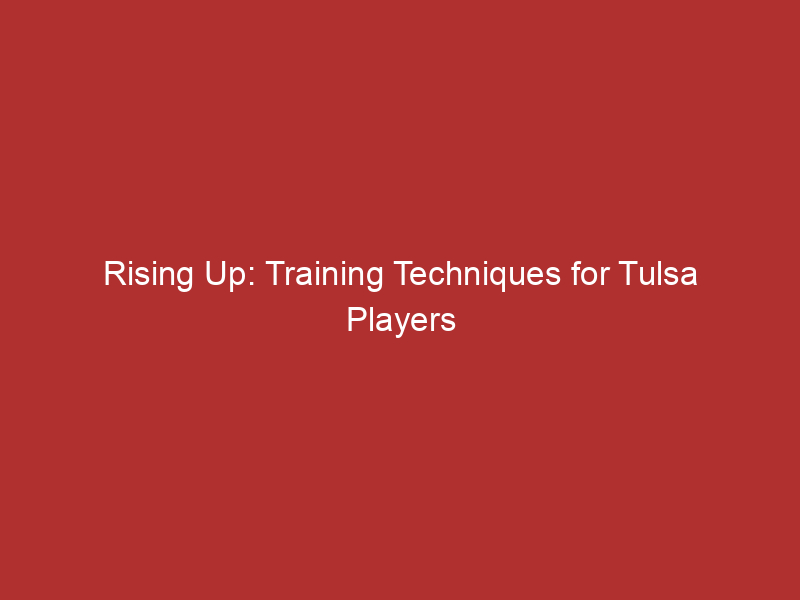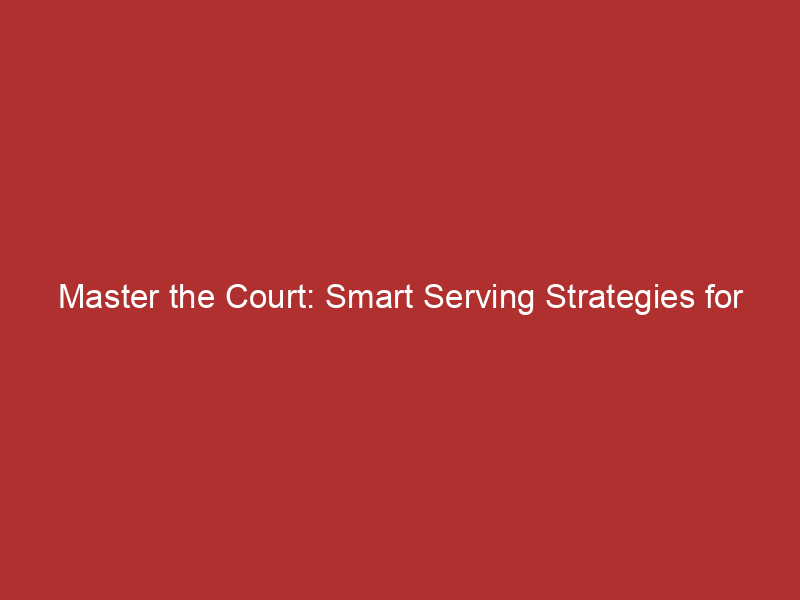Introduction to Volleyball Passing
Hey there, volleyball enthusiasts! Today, we’re going to dive into one of the most essential skills in volleyball – passing. Whether you’re a newbie or a seasoned player, understanding the basics of passing can significantly improve your game. So, let’s get started!
- Definition of Volleyball Passing
- Importance of Volleyball Passing
Passing in volleyball, also known as bumping, is the action of deflecting the ball with your forearms. It’s the first contact with the ball after the serve or attack from the opposing team. The goal of a pass is to get the ball to the setter in a controlled and precise manner. It’s like the first step in a dance routine – if you nail it, the rest of the performance goes smoothly. You can learn more about it here.
Passing is the backbone of a successful volleyball game. It sets the tone for the rest of the play. A good pass can lead to a strong attack, putting your team in a position to score. On the other hand, a poor pass can make it difficult for your team to control the game. In fact, according to a study, teams with a higher passing accuracy had a 63% chance of winning the game. So, mastering the art of passing is crucial for any volleyball player.
Now that we’ve covered the basics, in the next sections, we’ll explore different passing techniques, drills, and strategies to help you become a passing pro. So, stay tuned!
Volleyball Passing Techniques
Mastering the art of passing in volleyball is crucial for every player. Let’s dive into the details and understand what makes a perfect volleyball pass.
Understanding the Perfect Volleyball Pass
A perfect volleyball pass is more than just hitting the ball. It’s about precision, control, and timing. Let’s break it down into components and common mistakes to avoid.
- Components of a Perfect Volleyball Pass
- Body Position: Your body should be square to the net, with your feet shoulder-width apart and your knees slightly bent. This gives you the stability you need to control the ball.
- Arm Position: Your arms should be straight and together, forming a platform for the ball to bounce off. The ball should contact your forearms, not your hands or fingers.
- Ball Control: The aim is to direct the ball to a specific spot on your side of the court, usually towards the setter. This requires a combination of good body and arm position, as well as a feel for the ball.
- Common Mistakes in Volleyball Passing
- Swinging Arms: Swinging your arms can send the ball in unpredictable directions. Keep your arms straight and use your legs to generate power.
- Not Moving Feet: If you’re not moving your feet, you’re not going to get to the ball in time. Always be ready to move and adjust your position.
- Bad Timing: If you hit the ball too early or too late, it won’t go where you want it to. Practice your timing to get it just right.
There are three main components to a perfect volleyball pass:
Even experienced players can make mistakes in volleyball passing. Here are a few common ones to watch out for:
Understanding these components and avoiding common mistakes can help you improve your volleyball passing skills. Remember, practice makes perfect!
Specific Volleyball Passing Techniques
Let’s dive into some specific volleyball passing techniques that can help you become a better player. These techniques are the building blocks of a great volleyball game, so it’s important to master them!
- Forearm Pass
- Overhead Pass
- Jump Pass
The forearm pass, also known as the bump, is the most basic and most used pass in volleyball. It’s often the first skill taught to new players. The key to a good forearm pass is to make contact with the ball on the flat surface of your forearms, not your hands. Your feet should be shoulder-width apart, knees slightly bent, and your eyes should be on the ball. Learn more about the forearm pass here.
The overhead pass, or the set, is another fundamental volleyball passing technique. It’s used to set up attacks and requires a lot of precision. To perform an overhead pass, position your hands in a triangle shape above your forehead. Your thumbs and index fingers should form the triangle. As the ball comes towards you, push it upwards with your fingers, aiming for a teammate. Learn more about the overhead pass here.
The jump pass is a more advanced technique that can be used to catch the opposing team off guard. It involves jumping and passing the ball in mid-air. This technique requires good timing, coordination, and strength. It’s best to practice this pass after you’ve mastered the forearm and overhead passes. Learn more about the jump pass here.
Remember, practice makes perfect! So, grab a ball and start practicing these volleyball passing techniques. Before you know it, you’ll be passing like a pro!
Volleyball Passing Drills
Hey there, volleyball enthusiasts! Let’s dive into some awesome volleyball passing drills. These are designed to help you improve your skills and become a pro on the court. Ready? Let’s get started!
Drills for Volleyball Skills Improvement
Here are three simple but super effective drills you can try out. Remember, practice makes perfect!
- Wall Passing Drill
- Partner Passing Drill
- Triangle Passing Drill
This is a great drill for beginners. All you need is a wall and a ball. Stand about two feet from the wall and pass the ball against it. The goal is to control your pass so that the ball bounces back to you. Try to keep the ball going for as long as possible. It’s a fun way to work on your passing accuracy and control.
Grab a friend and try this one out. Stand about 10 feet apart and pass the ball back and forth. Make sure to call out “mine” before you pass – communication is key in volleyball! This drill helps improve your accuracy and teamwork.
This drill requires three people. Stand in a triangle formation and pass the ball to each other in a clockwise direction. Then, switch it up and pass counter-clockwise. This drill is great for improving your agility and passing skills under different angles.
Remember, the key to improving your volleyball skills is consistency. Keep practicing these drills and you’ll see improvement in no time. So, what are you waiting for? Grab a ball and start practicing!
Advanced Volleyball Passing Drills
Ready to take your volleyball passing skills to the next level? Awesome! Let’s dive into some advanced volleyball passing drills that will help you become a pro on the court. Remember, practice makes perfect!
- Shuffle Pass Drill
- Run and Pass Drill
- Jump and Pass Drill
This drill is all about footwork and agility. The aim is to shuffle sideways while keeping your arms ready to pass the ball. Start by standing in the ready position, then shuffle sideways to the left or right while passing the ball to a partner or against a wall. This drill helps to improve your lateral movement and passing accuracy. Try doing this for 5 minutes straight and see how you improve over time!
The Run and Pass Drill is a fantastic way to improve your passing skills while on the move. Start at one end of the court, sprint to the other end, and then pass the ball to a partner or coach. The key here is to maintain control and accuracy while running at full speed. This drill is great for improving your endurance and passing skills under pressure. Give it a shot!
Ready to add a little bounce to your drill routine? The Jump and Pass Drill is designed to improve your passing skills while jumping. Start by jumping in place and passing the ball to a partner or against a wall. The goal is to maintain control and accuracy while in the air. This drill is a great way to prepare for those high-intensity moments in a game when you need to jump and pass at the same time. Don’t be afraid to reach for the sky!
Remember, these drills are meant to be challenging. Don’t get discouraged if you struggle at first. Keep practicing, stay positive, and you’ll see improvement in no time. Now, go out there and show the court what you’ve got!
Volleyball Training for Passing
Hey there, volleyball enthusiasts! Let’s dive into the exciting world of volleyball passing and how training can make a huge difference.
Improving Volleyball Passing through Training
Training is the secret sauce to becoming a volleyball passing pro. It’s all about practice, consistency, and the right techniques. So, let’s get started!
- Training Schedule for Volleyball Passing
- Importance of Consistent Training
Creating a regular training schedule is key to mastering volleyball passing. You might want to start with three days a week, focusing on different aspects of passing. Remember, it’s not about how long you train, but how effectively you use your training time. Try to include a mix of drills, strength training, and flexibility exercises in your routine.
Consistency is the name of the game when it comes to volleyball training. It’s like building a sandcastle, one grain at a time. Each training session adds a little more to your passing skills. So, make sure you stick to your schedule, no matter what. Consistent training not only improves your skills but also builds muscle memory, which is crucial for executing perfect passes during a game.
Remember, Rome wasn’t built in a day, and neither are volleyball passing skills. So, keep at it, stay positive, and you’ll see improvements in no time. Happy training!
Volleyball Training Techniques
When it comes to volleyball passing, there are three main types of training that can help you improve. Let’s dive into each one and see how they can make you a better player!
- Strength Training for Volleyball Passing
- Flexibility Training for Volleyball Passing
- Endurance Training for Volleyball Passing
Strength training is all about building up the muscles you use when you pass a volleyball. This includes your arms, shoulders, and even your core! By doing exercises like push-ups, pull-ups, and planks, you can increase your strength and make your passes more powerful. Remember, the stronger you are, the easier it will be to pass the ball accurately and consistently.
Flexibility is another key aspect of volleyball passing. The more flexible you are, the easier it will be to reach for those tricky passes. Stretching exercises like yoga and Pilates can help improve your flexibility. Not only will this make you a better passer, but it can also help prevent injuries. So, don’t skip your stretches!
Last but not least, we have endurance training. Volleyball games can be long and tiring, so you need to be able to keep up your energy levels. Running, cycling, and swimming are great ways to build up your endurance. The more endurance you have, the longer you’ll be able to keep passing the ball effectively.
Remember, good volleyball passing comes from a combination of strength, flexibility, and endurance. So, make sure you’re working on all three in your training. Happy passing!
Volleyball Passing Strategy
When it comes to volleyball, having a solid passing strategy can make a big difference in the game. Let’s dive into how you can develop a winning passing strategy.
Developing a Volleyball Passing Strategy
Creating a good passing strategy involves two main steps: understanding the opponent’s strategy and creating a counter strategy. Let’s break down each step.
- Understanding the Opponent’s Strategy
- Creating a Counter Strategy
First things first, you need to understand what you’re up against. Watch your opponents closely. Pay attention to their passing patterns, their strongest players, and their weaknesses. This will help you predict their moves and plan your strategy accordingly. For example, if you notice that a particular player often serves to the left, you can position your best passers on that side to counteract their serve.
Once you’ve got a good understanding of your opponent’s strategy, it’s time to create a counter strategy. This is where you plan your moves to counteract the opponent’s strategy. For instance, if your opponent has a strong server, you might decide to use a three-person receive formation to ensure that the serve is successfully received. Remember, the key to a successful counter strategy is flexibility. Be ready to adjust your strategy as the game progresses and the opponent’s strategy changes.
Developing a volleyball passing strategy is like playing a game of chess. You need to anticipate your opponent’s moves and plan your counter moves accordingly. With practice and a good understanding of the game, you can create a passing strategy that will give you an edge over your opponents.
Implementing the Volleyball Passing Strategy
- Role of the Coach in Strategy Implementation
The coach plays a vital role in implementing the volleyball passing strategy. They are the ones who design the strategy, teach it to the players, and ensure that it is executed correctly. The coach needs to have a deep understanding of the game and the abilities of each player. They also need to be able to communicate effectively and provide constructive feedback. Coaches are the backbone of any successful volleyball team!
- Role of the Players in Strategy Implementation
Players are the ones who put the strategy into action on the court. They need to understand the strategy, practice it, and execute it during games. Each player has a specific role in the team and in the strategy. They need to work together, communicate effectively, and support each other to make the strategy work.
- Communication Techniques
Good communication is key in volleyball. Players need to communicate with each other on the court to coordinate their movements and passes. They also need to communicate with the coach to understand the strategy and get feedback. Some effective communication techniques include using clear and concise language, using non-verbal signals, and actively listening to each other.
- Feedback Techniques
Feedback is crucial in improving performance and implementing the strategy. The coach should provide constructive feedback to the players, focusing on what they did well and what they can improve. Players should also give feedback to each other and to the coach. Feedback should be specific, timely, and respectful.
- Providing Guidance and Support
Implementing a new strategy can be challenging. The coach and the players need to provide guidance and support to each other. This can be done by explaining things clearly, being patient, encouraging each other, and celebrating small victories. Remember, a team that supports each other wins together!
- Monitoring Progress and Providing Feedback
It’s important to monitor progress and provide feedback regularly. This helps to ensure that the strategy is working and to make adjustments if necessary. The coach should keep track of the team’s performance in games and practices, and discuss this with the players. Players should also monitor their own performance and seek feedback from the coach and their teammates.
- Recap of Volleyball Passing Techniques and Drills
Let’s recap some of the key volleyball passing techniques and drills. Techniques include the forearm pass, the overhead pass, and the jump pass. Drills include the pepper drill, the target drill, and the shuffle drill. Remember, practice makes perfect!
- Importance of Consistent Training and Effective Coaching
Consistent training and effective coaching are crucial for implementing the volleyball passing strategy. Training helps players to improve their skills and to understand the strategy better. Coaching provides guidance, feedback, and support. Together, they can help the team to reach its full potential and to win games.

